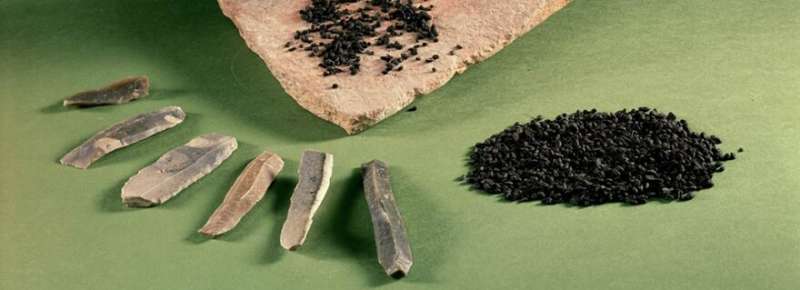Research into oldest known burial field in the Netherlands sheds new light on traditional gender roles

New archaeological research into grave goods and skeletal material from the oldest grave field in the Netherlands shows that male-female roles 7,000 years ago were less traditional than was thought. The research was conducted by a multidisciplinary team of researchers led by Archol, the National Museum of Antiquities and Leiden University.
A team of chemical analysts, physical anthropologists and archaeologists studied the Elsloo grave field (Municipality of Stein, Limburg). Dr. Luc Amkreutz, curator of prehistory at the National Museum of Antiquities and Professor by Special Appointment of Public Archaeology at Leiden University, was closely involved.
The researchers examined the grave goods and skeletal remains. They could determine the sex and age of some of the deceased from the cremation remains. This enabled them to conclude that flint arrowheads and stone axes, which are traditionally attributed to men, are also frequently found in women's graves in the Elsloo field.
This casts new light on the traditional idea that grave goods, as personal possessions, are representative of the daily life and sex of the deceased. They turn out to be less gender-specific than previously thought.
Objects not linked to sex or age
The graves of the elderly, especially those of women, were richly furnished. There appears to be a certain status associated with age. There also seems to be a "burial tradition" with specific grave goods and rituals, which are often related to hunting, food preparation, woodworking and body decoration. Many of the deceased were sprinkled with red ochre, for example.
And almost all of the grave goods had been intensively used, regardless of the sex and age of the deceased. The goods seem to be specific utensils that belonged to the deceased's relatives and were deliberately placed in the grave. This gives a good impression of the role of the living, their choices and the rituals surrounding death. The research reveals a clear nuance in the roles of prehistoric men as hunters, herders, warriors and builders, and women as caregivers and potters.
Oldest known burial field in the Netherlands
The Neolithic burial field at Elsloo belonged to the Linear Pottery culture, the first farming communities in the Netherlands and large parts of Europe more than 7,000 years ago. The Elsloo burial field is the oldest known burial field in the Netherlands (circa 5100–4950 BC). It was excavated by the Cultural Heritage Agency under the leadership of prehistorian Pieter Modderman (1959) and Leiden University (1966).
The finds have since been in the care of the National Museum of Antiquities in Leiden. This research was carried out within the Cultural Heritage Agency's Knowledge of Archaeology project. A selection of the finds from the burial field will be on display for a year from 24 June 2022 at Historiehuis van de Maasvallei in Elsloo.
Provided by Leiden University





















